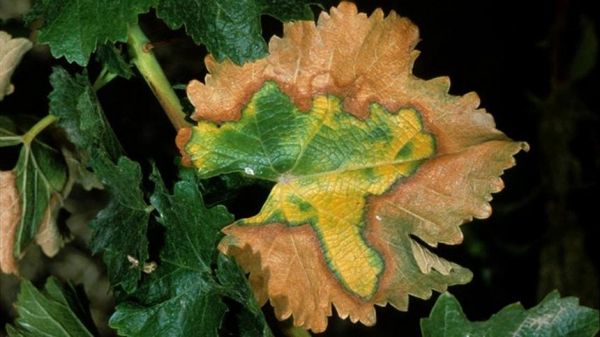Scientists are gaining a better understanding of Pierce’s disease and how it affects grapevines. The disease, which annually costs California more than $100 million, comes from a bacterium called Xylella fastidiosa. While the bacterium has been present in the state for more than 100 years, Pierce’s disease became a more serious threat to agriculture with the arrival of the glassy-winged sharpshooter insect, which can carry the bacterium from plant to plant.
In a new study, published today in Frontiers in Plant Science, researchers at the University of California, Davis, have identified a set of molecular markers that influence the onset of Pierce’s disease in grapevines.
“We now have a very good idea of the plant responses to the disease,” said lead author Paulo Zaini, a postdoctoral researcher in the Department of Plant Sciences at UC Davis. “This will help us in early diagnosis and help us design strategies to protect the plant from damaging itself.”
The glassy-winged sharpshooter injects the Xylella fastidiosa bacterium into the plant’s xylem, which is the part of the plant that carries water. The disease causes leaves to yellow or “scorch,” eventually drying up and dropping from the vine. It can kill a plant in three to five years. Few diseases can kill grapevines so quickly.
Continue reading at University of California - Davis.
Image via University of California - Davis.


